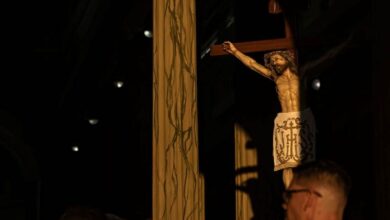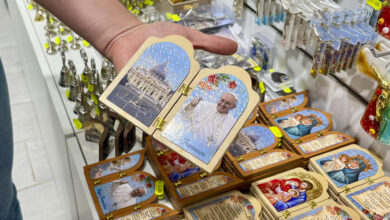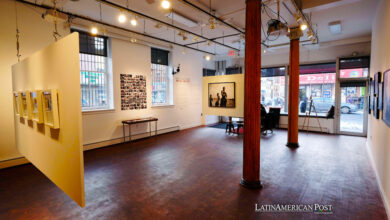How Latin American Catholics Live Conclave Papal Transition

With the passing of Pope Francis on Monday at age 88, Latin American Catholics find themselves at a momentous crossroads. The Church enters a sede vacante, a time of solemn reflection and unity, culminating in a centuries-old ritual: the conclave.
The Sede Vacante and Its Significance
The death of the pope leaves the Vatican in sede vacante —literally, a vacant seat. This phrase signals a distinct period when the universal Church prepares to select a new pontiff. For millions of Latin American believers, this transition carries profound spiritual and cultural meaning. After a pope’s passing, immediate responsibility for Vatican governance falls to the camerlengo, currently Kevin Farrell. His role is to oversee administrative tasks, safeguard papal property, and call the world’s cardinals to Rome for the funeral rites and eventual election of a successor.
During the sede vacante, no major changes or decisions are permitted. Canon Law of the Church focuses on continuation plus importance. It recommends against adjustments to standard activities except for basic daily actions. Through respect for this guideline, Catholics understand the weight of losing their religious figure and the requirement to progress with honor besides together.
Once all the required ecclesiastical arrangements are in place, attention shifts to the central event: the conclave. This extraordinary assembly will gather cardinals under the age of 80 from across the globe—currently 138 in total. Their mission? Elect the next bishop of Rome and spiritual shepherd of the world’s 1.3 billion Catholics. Pope Francis worked to decentralize the Church. He appointed numerous cardinals who came from Latin America and Africa along with Asia. This promoted a wider geographical representation in present conclaves.
Entering the Sealed Conclave
The word “conclave” comes from the Latin cum clave, or “under lock and key.” The practice began near the close of the 1200s. At that time, citizens in Viterbo confined cardinals. The reason: the cardinals disagreed about whom to select as pope. They stayed inside until an agreement occurred. Because of this action, Gregory X became the new pope. Present-day conclaves still have this isolation. The goal is to promote agreement and prevent influence from outsiders.
On the date determined by the cardinals—no later than 20 days after the official announcement of the pope’s death—electors gather for a Mass called Pro eligendo Papa (For the Election of a Pope) in St. Peter’s Basilica. Following this liturgy, they solemnly process into the Sistine Chapel, singing the “Veni Creator,” an ancient hymn invoking the Holy Spirit’s guidance.
Inside the chapel, with Michelangelo’s fresco of the Last Judgment watching over them, each cardinal makes a sacred oath of secrecy. Their vow promises fidelity and discretion, forbidding them from discussing the proceedings with the outside world. After the papal master of ceremonies declares “Extra omnes” (Everyone out), only voting cardinals remain, and the doors are sealed. The Church even deploys technological measures—like frequency jammers—to ensure no external communications interrupt their work.
During each round of voting, the cardinals cast handwritten ballots. Each reads Eligo in Summum Pontificem (“I elect as supreme pontiff”) above a space for the chosen name. One by one, each elector places the folded paper on a plate, then slides it into an urn, all while reciting a brief oath: “I swear before Christ, my judge, that my vote is for the person I believe God wants to be elected.” Three cardinals known as scrutineers count and record the ballots, piercing each slip of paper and threading them in a chain. A supermajority—two-thirds of the votes—is required to reach a valid decision.
Choosing the New Pontiff
After each vote, the ballots are burned on a stove within the Sistine Chapel. Two distinct smoke signals rise through a chimney that the world watches closely:
- Black smoke (fumata nera) signals that no candidate has secured the necessary majority.
- White smoke (fumata bianca) proclaims to everyone gathered in St. Peter’s Square—and to eager Catholics worldwide—that a successor has been chosen.
When a cardinal gains the requisite two-thirds support, the dean of the College of Cardinals, Giovanni Battista Re (as of February 2025), steps forward to ask if he can accept the role of Supreme Pontiff. If the chosen cardinal agrees, the next question follows: “By what name shall you be called?” The new pontiff then withdraws to a small adjacent room, often referred to as the “Room of Tears,” where three papal vestments of different sizes await. Once he is robed, the pope returns to the chapel for prayers before stepping onto the balcony of St. Peter’s Basilica.
At that historic moment, the protodiácono (protodeacon) announces from the balcony, “Habemus Papam!”—”We have a pope!” The new pontiff then appears before a cheering crowd to grant his first Urbi et Orbi (To the City and the World) blessing. Catholics around the globe, together with Latin America’s extensive religious communities, wait to see how the Church will chart its new spiritual path.
The shift holds multiple layers of meaning for religious people across the nations between Mexico and Argentina. The present time has meaning for Catholics everywhere, including the great number of faithful in Latin America. They await the future spiritual path the Church will follow.
For believers in lands that go from Mexico to Argentina, this change has many meanings. Pope Francis, he is from Argentina, gave the Church a distinctly Latin American quality, with attention to the poor, the excluded along with the global south. Now that he is gone, the area looks toward what is next, hoping the changes, variety as well as pastoral focus will go on under the new pontiff.
The gathering is private and follows custom, its effect is seen in parishes, cathedrals next to missions. In Latin America, with the most Catholics, believers now pray for a good successor. They want someone who will lead them in times of social trouble, money problems in addition to changing cultures. The process is closed off inside the Sistine Chapel, but the hopes and worries of millions of Latin American Catholics echo within those closed doors.
Also Read: Pope Francis: Latin American Pioneer and Lasting Legacy
Practical facts such as dates, rules along with voting create the structure of the meeting. But its spiritual core is to pick a leader who can join together and give hope to a varied flock. As the Church starts a serious move from sadness to renewal, Latin American Catholics will join to pray and think. They will wait for the white smoke that signals a new time of leadership in the Roman Catholic Church.





